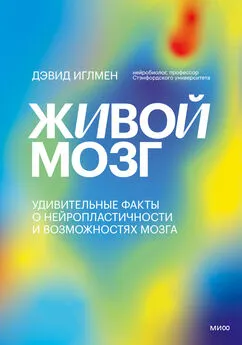Дэвид Иглмен - Живой мозг
- Название:Живой мозг
- Автор:
- Жанр:
- Издательство:Манн, Иванов и Фербер
- Год:2021
- ISBN:978-5-00169-987-3
- Рейтинг:
- Избранное:Добавить в избранное
-
Отзывы:
-
Ваша оценка:
Дэвид Иглмен - Живой мозг краткое содержание
Живой мозг - читать онлайн бесплатно ознакомительный отрывок
Интервал:
Закладка:
D’Angiulli A, Waraich P (2002). Enhanced tactile encoding and memory recognition in congenital blindness. Int J Rehabil Res 25 (2): 143–145.
Darian-Smith C, Gilbert CD (1994). Axonal sprouting accompanies functional reorganization in adult cat striate cortex. Nature 368: 737–740.
Day JJ, Sweatt JD (2010). DNA methylation and memory formation. Nat Neurosci 13 (11): 1319.
Diamond M (2001). Response of the brain to enrichment. An Acad Bras Ciênc 73: 211–220.
Donati AR et al. (2016). Long-term training with a brain-machine interface-based gait protocol induces partial neurological recovery in paraplegic patients. Sci Rep 6: 30383.
Dowling J (2008). Current and future prospects for optoelectronic retinal prostheses. Nature-Eye 23: 1999–2005.
Draganski B, Gaser C, Busch V, Schuierer G, Bogdahn U, May A (2004). Neuroplasticity: Changes in grey matter induced by training. Nature 427 (6972): 311–312.
Driemeyer J, Boyke J, Gaser C, Büchel C, May A (2008). Changes in gray matter induced by learning — revisited. PLoS One 3 (7): e2669.
Dudai Y (2004). The neurobiology of consolidations, or, how stable is the engram? Ann Rev Psychol 55: 51–86.
Eagleman DM (2001). Visual illusions and neurobiology. Nat Rev Neurosci 2 (12): 920–926.
Eagleman DM (2005). Distortions of time during rapid eye movements. Nat Neurosci 8 (7): 850–851.
Eagleman DM (2008). Human time perception and its illusions. Curr Opin Neurobiol 18 (2): 131–136.
Eagleman DM (2009). Silicon immortality: Downloading consciousness into computers. In This Will Change Everything: Ideas That Will Shape the Future, edited by J Brockman. Harper Perennial.
Eagleman DM (2010). The strange mapping between the timing of neural signals and perception. In Issues of Space and Time in Perception and Action, edited by R Nijhawan. Cambridge University Press.
Eagleman DM (2011). The brain on trial. Atlantic Monthly. July/August.
Eagleman DM (2011). Incognito: The Secret Lives of the Brain. Pantheon.
Eagleman DM (2012). Synaesthesia in its protean guises. Br J Psychol 103 (1): 16–19.
Eagleman DM (2015). Can we create new senses for humans? TED talks.
Eagleman DM (2015). The Brain: The Story of You. Pantheon.
Eagleman DM, Downar J (2015). Brain and Behavior: A Cognitive Neuroscience Perspective. Oxford University Press.
Eagleman DM (2018). We will leverage technology to create new senses. Wired.
Eagleman DM, Goodale MA (2009). Why color synesthesia involves more than color. Trends Cogn Sci 13 (7): 288–292.
Eagleman DM, Jacobson JE, Sejnowski TJ (2004). Perceived luminance depends on temporal context. Nature 428 (6985): 854.
Eagleman DM, Kagan AD, Nelson SS, Sagaram D, Sarma AK (2007). A standardized test battery for the study of synesthesia. J Neurosci Methods 159 (1): 139–145.
Eagleman DM, Montague PR (2002). Models of learning and memory. In Encyclopedia of Cognitive Science. Macmillan.
Eagleman DM, Pariyadath V (2009). Is subjective duration a signature of coding efficiency? Philos Trans R Soc 364 (1525): 1841–1851.
Eagleman DM, Sejnowski TJ (2000). Motion integration and postdiction in visual awareness. Science 287 (5460): 2036–2038.
Eagleman DM, Vaughn DA (2020). A new theory of dream sleep. Under review.
Edelman GM (1987). Neural Darwinism: The Theory of Neuronal Group Selection. Basic Books.
Elbert T, Pentev C, Wienbruch C, Rockstroh B, Taub E (1995). Increased finger representation of the fingers of the left hand in string players. Science 270: 305–306.
Elbert T, Rockstroh B (2004). Reorganization of human cerebral cortex: The range of changes following use and injury. Neuroscientist 10: 129–141.
Eriksson PS et al. (1998). Neurogenesis in the adult human hippocampus. Nat Med 4 (11): 1313–1317.
Feuillet L, Dufour H, Pelletier J (2007). Brain of a white-collar worker. Lancet 370: 262.
Finney EM, Fine I, Dobkins KR (2001). Visual stimuli activate auditory cortex in the deaf. Nat Neurosci 4 (12): 1171–1173.
Flor H, Elbert T, Knecht S, Wienbruch C, Pantev C, Birbaumer N, Larbig W, Taub E (1995). Phantom-limb pain as a perceptual correlate of cortical reorganization following arm amputation. Nature 375 (6531): 482–484.
Florence SL, Taub HB, Kaas JH (1998). Large-scale sprouting of cortical connections after peripheral injury in adult macaque monkeys. Science 282: 1117–1121.
Fuhr P, Cohen LG, Dang N, Findley TW, Haghighi S, Oro J, Hallett M (1992). Physiological analysis of motor reorganization following lower limb amputation. Electroencephalogr Clin Neurophysiol 85 (1): 53–60.
Fusi S, Drew PJ, Abbott LF (2005). Cascade models of synaptically stored memories. Neuron 45 (4): 599–611.
Gougoux F, Lepore F, Lassonde M, Voss P, Zatorre RJ, Belin P (2004). Neuropsychology: Pitch discrimination in the early blind. Nature 430 (6997): 309.
Gougoux F, Zatorre RJ, Lassonde M, Voss P, Lepore F (2005). A functional neuroimaging study of sound localization: Visual cortex activity predicts performance in early-blind individuals. PLoS Biol 3 (2): e27.
Gould E, Beylin AV, Tanapat P, Reeves A, Shors TJ (1999). Learning enhances adult neurogenesis in the hippocampal formation. Nat Neurosci 2: 260–265.
Gould E, Reeves A, Graziano MSA, Gross C (1999). Neurogenesis in the neocortex of adult primates. Science 286: 548–552.
Gu Q (2003). Contribution of acetylcholine to visual cortex plasticity. Neurobiol Learn Mem 80: 291–301.
Hallett M (1999). Plasticity in the human motor system. Neuroscientist 5: 324–332.
Halligan PW, Marshall JC, Wade DT (1994). Sensory disorganization and perceptual plasticity after limb amputation: A follow-up study. Neuroreport 5: 1341–1345.
Hamilton RH, Keenan JP, Catala MD, Pascual-Leone A (2000). Alexia for Braille following bilateral occipital stroke in an early blind woman. Neuroreport 11: 237–240.
Hamilton RH, Pascual-Leone A, Schlaug G (2004). Absolute pitch in blind musicians. Neuroreport 15: 803–806.
Hasselmo ME (1995). Neuromodulation and cortical function: Modeling the physiological basis of behavior. Behav Brain Res 67: 1–27.
Hawkins J, Blakeslee S (2004). On Intelligence. Times Books.
Hochberg LR, Serruya MD, Friehs GM, Mukand JA, Saleh M, Caplan AH, Branner A, Chen D, Penn RD, Donoghue JP (2006). Neuronal ensemble control of prosthetic devices by a human with tetraplegia. Nature 442: 164–171.
Hoffman KL, McNaughton BL (2002). Coordinated reactivation of distributed memory traces in primate neocortex. Science 297: 2070.
Hoffmann R et al. (2018). Evaluation of an audio-haptic sensory substitution device for enhancing spatial awareness for the visually impaired. Optom Vis Sci 95 (9): 757.
Hubel DH, Wiesel TN (1965). Binocular interaction in striate cortex of kittens reared with artificial squint. J Neurophysiol 28: 1041–1059.
Hurovitz C, Dunn S, Domhoff GW, Fiss H (1999). The dreams of blind men and women: A replication and extension of previous findings. Dreaming 9: 183–193.
Jacobs GH, Williams GA, Cahill H, Nathans J (2007). Emergence of novel color vision in mice engineered to express a human cone photopigment. Science 315 (5819): 1723–1725.
Jameson KA (2009). Tetrachromatic color vision. In The Oxford Companion to Consciousness, edited by P Wilken, T Bayne, and A Cleeremans. Oxford University Press.
Johnson JS, Newport EL (1989). Critical period effects in second language learning: The influence of maturational state on the acquisition of English as a second language. Cogn Psychol 21: 60–99.
Jones EG (2000). Cortical and subcortical contributions to activity-dependent plasticity in primate somatosensory cortex. Annu Rev Neurosci 23: 1–37.
Jones EG, Pons TP (1998). Thalamic and brainstem contributions to large-scale plasticity of primate somatosensory cortex. Science 282 (5391): 1121–1125.
Karl A, Birbaumer N, Lutzenberger W, Cohen LG, Flor H (2001). Reorganization of motor and somatosensory cortex in upper extremity amputees with phantom limb pain. J Neurosci 21: 3609–3618.
Karni A, Meyer G, Jezzard P, Adams M, Turner R, Ungerleider L (1995). Functional MRI evidence for adult motor cortex plasticity during motor skill learning. Nature 377: 155–158.
Kay L (2000). Auditory perception of objects by blind persons, using a bioacoustic high resolution air sonar. J Acoust Soc Am 107 (6): 3266–3276.
Kennedy PR, Bakay RA (1998). Restoration of neural output from a paralyzed patient by a direct brain connection. Neuroreport 9: 1707–1711.
Kilgard MP, Merzenich MM (1998). Cortical map reorganization enabled by nucleus basalis activity. Science 279: 1714–1718.
Knudsen EI (2002). Instructed learning in the auditory localization pathway of the barn owl. Nature 417: 322–328.
Kubanek M, Bobulski J (2018). Device for acoustic support of orientation in the surroundings for blind people. Sensors 18 (12): 4309.
Kuhl PK (2004). Early language acquisition: Cracking the speech code. Nat Rev Neurosci 5: 831–843.
Kupers R, Ptito M (2014). Compensatory plasticity and cross-modal reorganization following early visual deprivation. Neurosci Biobehav Rev 41: 36–52.
Law MI, Constantine-Paton M (1981). Anatomy and physiology of experimentally produced striped tecta. J Neurosci 1: 741–759.
Lenay C, Gapenne O, Hanneton S, Marque C, Genouëlle C (2003). Sensory substitution: Limits and perspectives. In Touching for Knowing, Cognitive Psychology of Haptic Manual Perception, edited by Y Hatwell, A Streri, and E Gentaz, 275–292. John Benjamins.
Levy B (2008). The blind climber who “sees” with his tongue. Discover, June 22, 2008.
Lisman J, Cooper K, Sehgal M, Silva AJ (2018). Memory formation depends on both synapse-specific modifications of synaptic strength and cell-specific increases in excitability. Nat Neurosci 12: 1.
Lobo L et al. (2018). Sensory substitution: Using a vibrotactile device to orient and walk to targets. J Exp Psychol Appl 24 (1): 108.
Macpherson F, ed. (2018). Sensory Substitution and Augmentation. Oxford University Press.
Mancuso K, Hauswirth WW, Li Q, Connor TB, Kuchenbecker JA, Mauck MC, Neitz J, Neitz M (2009). Gene therapy for red-green colour blindness in adult primates. Nature 461: 784–788.
Maravita A, Iriki A (2004). Tools for the body (schema). Trends Cogn Sci 8: 79–86.
Martin SJ, Grimwood PD, Morris RG (2000). Synaptic plasticity and memory: An evaluation of the hypothesis. Annu Rev Neurosci 23: 649–711.
Massiceti D, Hicks SL, van Rheede JJ (2018). Stereosonic vision: Exploring visual-to-auditory sensory substitution mappings in an immersive virtual reality navigation paradigm. PLoS One 13 (7).
Matteau I, Kupers R, Ricciardi E, Pietrini P, Ptito M (2010). Beyond visual, aural, and haptic movement perception: hMT+ is activated by electrotactile motion stimulation of the tongue in sighted and in congenitally blind individuals. Brain Res Bull 82 (5–6): 264–270.
Meijer PB (1992). An experimental system for auditory image representations. IEEE Trans Biomed Eng 39 (2): 112–121.
Merabet LB et al. (2007). Combined activation and deactivation of visual cortex during tactile sensory processing. J Neurophysiol 97: 1633–1641.
Merabet LB et al. (2008). Rapid and reversible recruitment of early visual cortex for touch. PLoS One 3 (8): e3046. Merabet LB, Pascual-Leone A (2010). Neural reorganization following sensory loss: The opportunity of change. Nat Rev Neurosci 11 (1): 44–52.
Merabet LB, Rizzo J, Amedi A, Somers D, Pascual-Leone A (2005). What blindness can tell us about seeing again: Merging neuroplasticity and neuroprostheses. Nat Rev Neurosci 6 (1): 71–77.
Читать дальшеИнтервал:
Закладка:
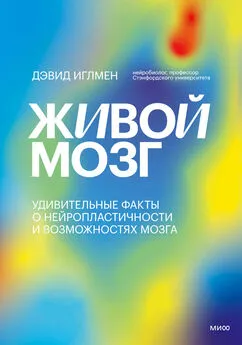
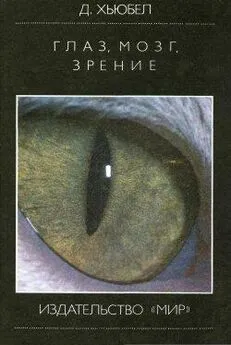
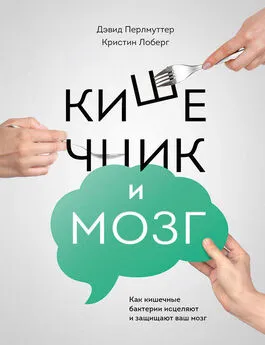
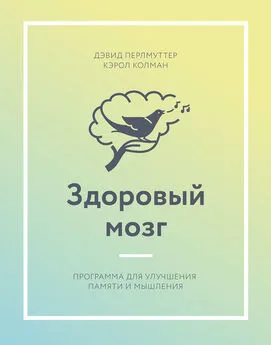


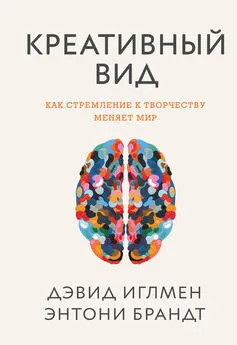
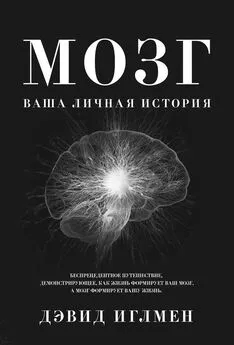
![Дэвид Доу - Почини свой мозг. Программа восстановления нейрофункций после инсульта и других серьезных заболеваний [litres]](/books/1143582/devid-dou-pochini-svoj-mozg-programma-vosstanovlen.webp)
